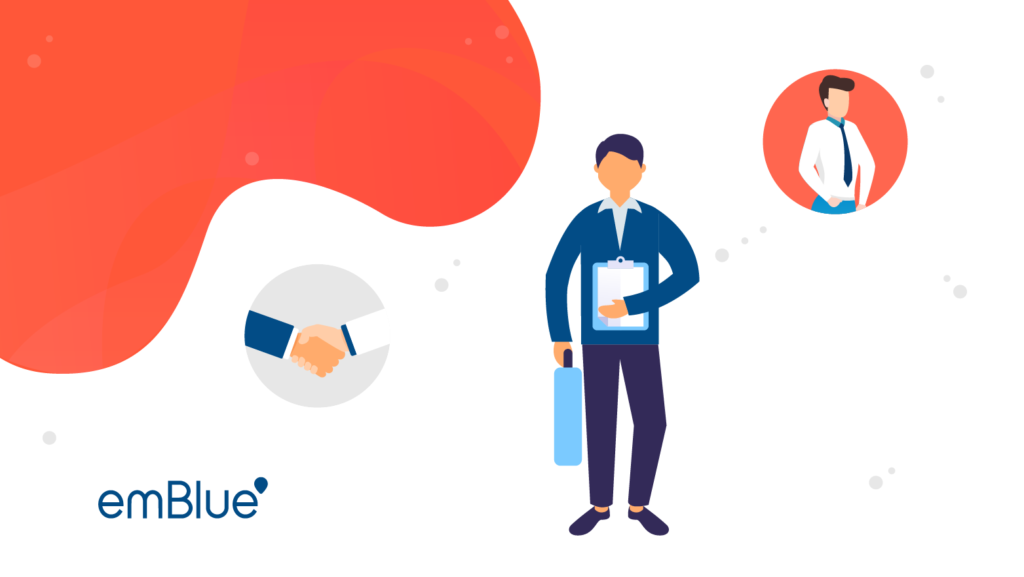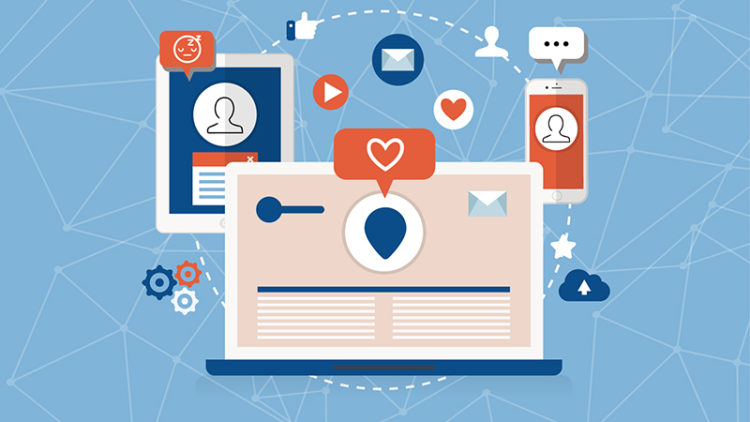The form of communication with which you choose to address your potential clients is a key factor in the results you achieve. Today we come to present you a very interesting alternative, but above all, an option that can give you great benefits: the direct marketing. Have you heard of him? Discover all the details in this note.
What is direct marketing?
Let’s start at the beginning: what is direct marketing? It is one who, as its name implies, speaks directly to a specific group of people. Therefore, when looking for definitions of this technique we have found on more than one occasion the idea of “target”. This is one of the main characteristics of the concept, since direct marketing is directed almost exclusively to a specific target .
When marketing actions are precisely targeted at a specific audience, there are two benefits that become apparent:
- Actions are better targeted.
- The investment is less.
Better targeted actions avoid wasting resources, thereby saving the business money. In other words, we could think of direct marketing as a more accessible alternative for small and medium-sized companies .
In some ways, this method bears some similarities to relationship marketing , since it tries to maintain direct two-way communication with users. In fact, according to who is considered the father of marketing, that is, Philip Kotler, direct marketing refers to “Direct connections with individual consumers who were carefully selected to elicit an immediate response from them and cultivate lasting relationships . ”
It is through direct marketing strategies that brands can create more relevant dialogues and conversations with their target audience , which contributes to maintaining and strengthening the bond with this target over time .
It’s all about better engaging with the specific audience we are targeting and building more effective connections. They must be supported, mainly, in bring the right message, at the right time. Something that is also very in tune with him automated marketing .
What is the goal of direct marketing?
Before we mentioned that one of the key characteristics of direct marketing is the target, it is a strategy that is always directed to a specific audience. Now we must talk about another of the pillars of this technique: its objective. What is the goal of direct marketing? generate a precise action by the user. Therefore, all actions include a Call to Action (CTA) or call to action.
In this sense, direct marketing examples would be:
- Visit our online store.
- Subscribe to our newsletter.
- Sign up here.
While other strategies aim to educate potential customers about the products or services of the business, direct marketing mainly seeks to persuade users to take a specific action. As we said before, the key element is the incorporation of calls to action that prompts them to act.
In this way, the success stories in direct marketing campaigns will be those that manage to achieve this objective.
It is important to bear in mind that what is sought through a direct marketing action is not always the sale. Everything will depend on the moment in which the user is with respect to his purchase journey or Customer Journey. Sometimes the goal is for the consumer to fill out a form, download a lead magnet, complete a survey, or any other desired action. Are conversions that bring that potential customer closer to the purchase or collaborate in the loyalty of the customers you already have .
Types of direct marketing
We could say that this marketing strategy was born long before the internet came into our lives. Therefore, when speaking of types of direct marketing We cannot limit ourselves to those that we can find in the online world. So, we will talk about two classes:
Which to choose? Although there are those who would say that both can be valuable for business, the truth is that digital direct marketing strategies allow automating a large part of the process using marketing automation tools. In turn, the results they produce are easier to measure. As we have said before, it is a cheaper alternative.
Digital direct marketing
Direct digital or online marketing uses channels based on new technologies to bring its messages to a specific target. These means are:
- Email marketing .
- SMS marketing campaigns .
- Push Notifications on mobile devices.
- Custom pop ups on websites.
- Targeted online guide (Social Ads or advertising banners).
- Social networks.
- Marketing by WhatsApp.
Which to choose? Although there are those who would say that both can be valuable for business, the truth is that digital direct marketing strategies allow automating a large part of the process using marketing automation tools. In turn, the results they produce are easier to measure. As we have said before, it is a cheaper alternative.
It is more than clear that if you have to opt for an alternative, all roads lead to direct online marketing.
What are direct marketing strategies? + Examples
We share 4 examples and direct marketing strategies to take advantage of this technique and improve the results in your business.
1- Make good use of your database
We could say that one of the most valuable tools in marketing is the database. This is the list of users who agreed to give you their contact information so that you can send them your brand communications. Thus, you can impact the user with the right messages at the right time , which is one of the techniques that provides the best results in any type of company.
Therefore, the key is to make good use of that database, which implies adequate segmentation.. This is: dividing users into small groups based on the common characteristics they share.
You can use as many criteria as you deem appropriate, from age, gender, occupation and location, to interests, needs, income, etc. This will allow you elaborate highly personalized messages that will be much more relevant for each segment or target .
Direct marketing examples : segment users who completed the registration in the online store, but did not buy. In that case, you could send them an email with a discount to take advantage of their first purchase.
If you want to discover how to segment your customers step by step, don’t miss this note .
2- Analyze in detail the behavior of users and personalize your messages
Now that you have segmented your contact base, what remains is to extract valuable information from each group. Therefore, you must study the behavior of users to understand what their purchase journey is like and what are the patterns that they follow. Based on this, you can create well-targeted messages to generate the desired responses.
Segmentation of your contact base and studying their behavior will allow you to know them in detail. Thus, you can create personalized messages for that audience. This is precisely the essence of direct marketing: impact users with relevant messages that encourage them to take the indicated action , be it registering, completing a form, sending a response, downloading something and even buying.
For example, suppose that a segment of users became interested in a certain product on your website. You can send communications offering complementary articles from the record of consumer activity on the page, this is known as remarketing. Find out what it is and its benefits at this article .
Without a doubt, it is a key resource for your direct marketing actions. Did you know that in emBlue do we have an ideal remarketing tool for Cross selling and Up Selling ?
3- Integrate several channels
Can direct marketing be omnichannel? Should be!
To boost direct marketing actions, nothing like the integration of multiple channels. You can use marketing automation platforms to send messages to users through the right channels at key moments.
For example, the link may begin with the user’s visit to the website. From there, Through personalized pop ups with tools like OnSite you can encourage potential clients to leave their data. Then, you could start an email sequence and even interact through other platforms such as WhatsApp, if the user prefers immediate attention through this channel.
The interesting thing is that you can offer different options so that your potential client is the one who chooses through which channel to interact with your brand .
Of course, ensure that in each of the media that you use in your strategy, the user has the same quality experience, because that is what omnichannel is all about .
4- Measure the results
Finally, the fourth and last of the direct marketing strategies that you should not forget is to measure the results. If there is something that characterizes this method, it is that its campaigns are very easy to measure. If, for example, you want start an email marketing campaign to get users to use a discount coupon through a CTA, it will be very easy to know how many open the email and how many click on the link. Through specific metrics you can measure and optimize your actions.
Some metrics you can use are:
- Open Rate (OR). Indicate the number of times users opened your message.
- Click to Rate (CTR). It is the percentage of the number of clicks that the content of your email had.
- Click To Open Rate (CTOR). It is the number of clicks on your piece, over the number of opens.
- Bounces. They are the recipients who for some reason could not receive your email in their inbox.
- Desusciptors. Number of users who have decided to stop receiving your communications.
By measuring and analyzing your results you can improve your campaigns more and more and with it, the results.
If you want to increase your conversions, direct marketing can be a great ally. Are you planning to apply it in your business?
Direct Marketing FAQ
What is direct marketing?
Direct marketing is one that focuses its energy on conversing with clients based on data and interests that define them, to create assertive and relevant communication.
What is Direct Marketing for?
In addition to saving time and resources, direct marketing serves to define specific objectives for each audience . Thus, better results can be achieved with the least effort, defining the stage of the customer journey and creating strategies to meet the objectives set.
️ How to apply direct marketing?
- Make good use of your database
- Know and analyze the behavior of your users
- Personalize your messages
- Integrate channels
- Measure the results


